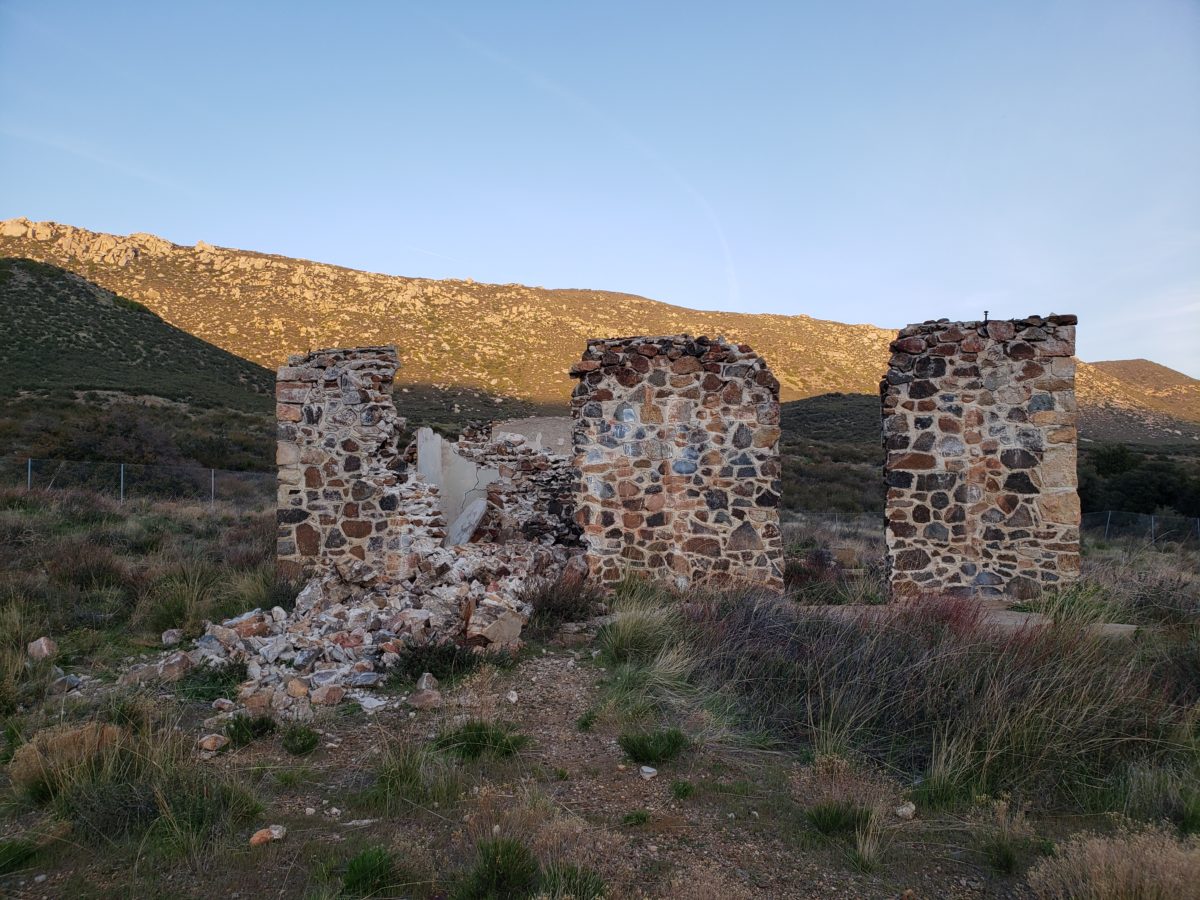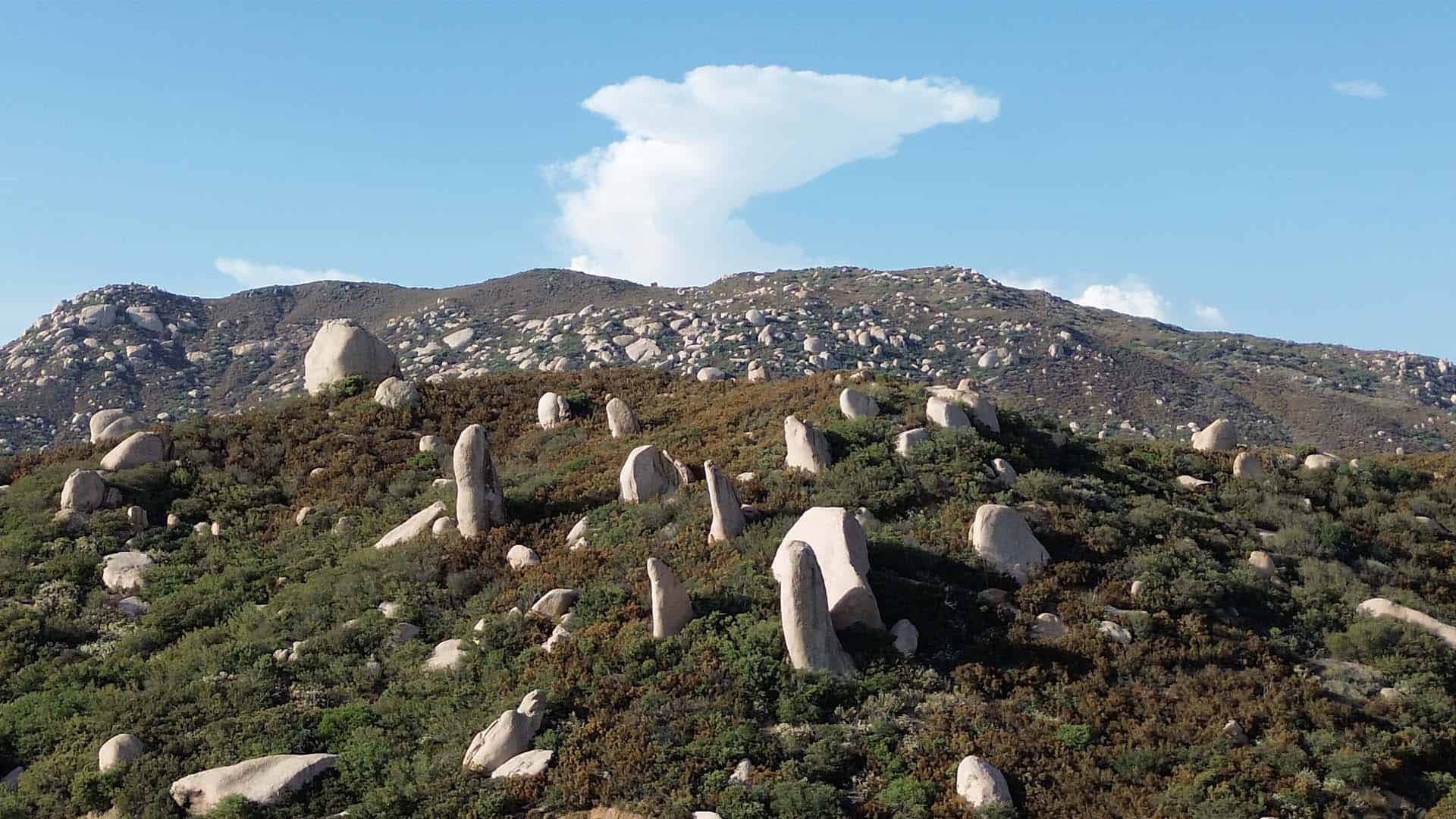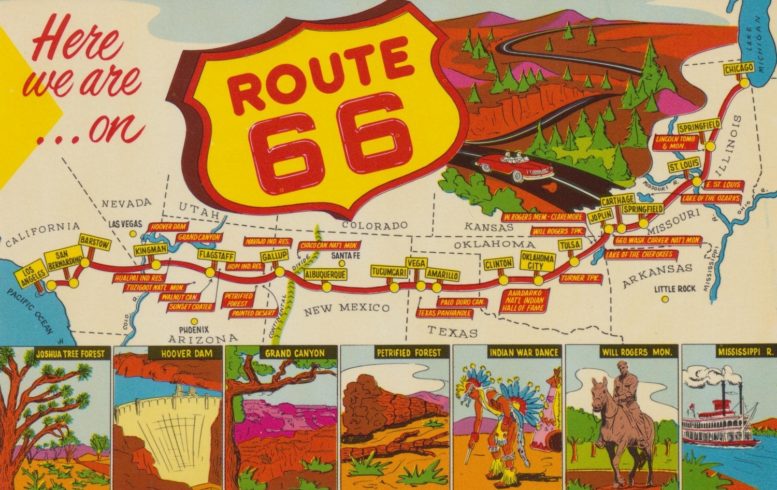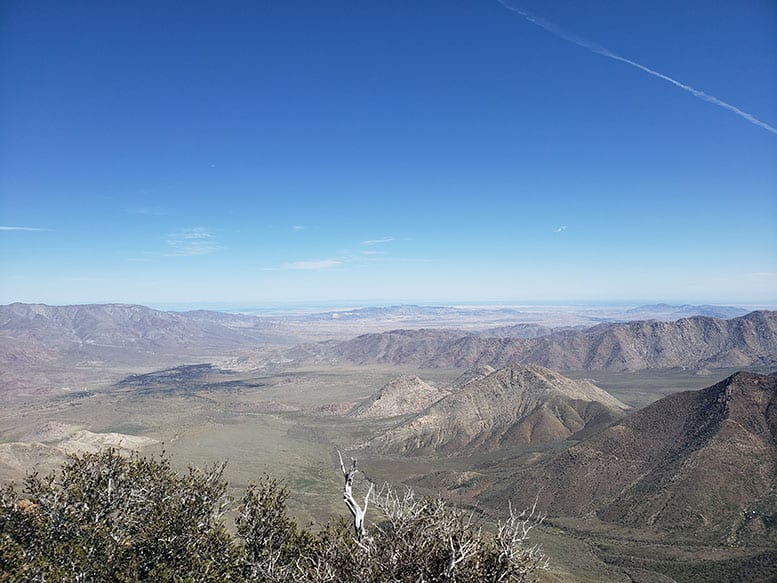Buckman Springs is probably best known these days as a rest stop east of San Diego on Interstate 8, but until the 1940s it was a popular resort town. Founded in the late 1880s, it was known for its spring waters that were pledged to have medicinal properties. While the town is long gone, you can still visit the ruins and maybe even find the hidden grave of the town’s founder, Amos Buckman.
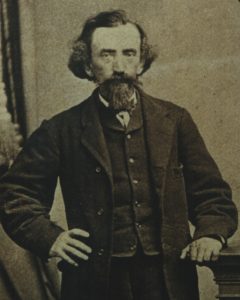
History of Buckman Springs
Amos M. Buckman was born in Barnard, VT on March 10, 1821. In the early 1840s, he moved to Quincy, MA, where he met Frances Pratt. The two were married in 1846 and had three daughters.
In 1853, Amos headed west, sailing to San Francisco via Panama. In San Francisco, he worked as a carpenter and by 1855 he saved enough money to purchase land in Napa County at Calistoga. The town was famous for its hot mineral water and springs. The land he purchased (or, he thought he purchased) contained 27 hot springs and he started his business, the Napa Soda Springs.
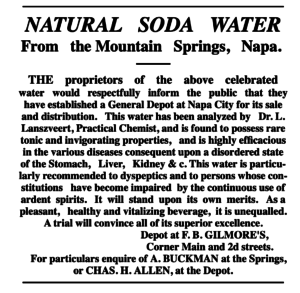
Unfortunately for Buckman, there was a dispute in ownership of the land. George O. Whitney and John Henry Wood claimed they owned the land from a purchase when the title to the land was still controlled by Mexican law in the 1840s. In 1860 they began litigation against Buckman. The dispute got ugly and wasn’t only fought in the courts.
On April 12, 1861, while Amos Buckman was away, Wood and some of his associates attacked Mrs. Buckman and the staff, burning their bottling plant to the ground. In 1862, Amos Buckman was attacked in his own home and someone tried to shoot John Henry Wood.
In 1863 the courts sided in Wood’s and Whitney’s favor and Buckman lost his land. He then packed up and moved to San Luis Obispo. The Napa Soda Springs resort became a pretty popular resort destination afterward, and even President Benjamin Harrison stayed there.
After spending a few years in San Luis Obispo, Buckman then moved to San Diego in 1871, where he lived in what is now the Gaslamp Quarter. As San Diego was experiencing a population boom at the time, Buckman found plenty of work as a carpenter.
In 1875, Buckman’s son-in-law heard about hot springs that were available east of San Diego, near the present-day town of Campo. He told Buckman, who still dreamed of his own hot springs resort, and Buckman rode east to check out the land. Within a few months, Buckman had set up camp at the springs.
The water from the springs was naturally carbonated and contained lithia, potassium, sodium, calcium sulfates, and iron. The water was advertised as a cure-all and began attracting customers from San Diego who would make the 50-mile journey for the water, which would take two days.
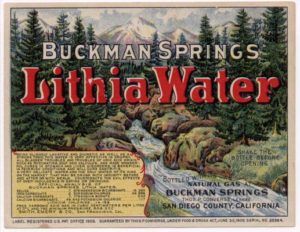
At first, visitors would stay in tents, but cabins and then a hotel were quickly built. In 1881, Buckman was given a homestead of 160-acres of land in the area. Buckman Springs was born.
Amos Buckman ran the resort until his death on March 28, 1898. He was buried at Buckman Springs.
After Amos died, his daughter Winnie ran the resort and, and with Highway 80 going through Buckman Springs she added a gas station, cafe, and a country store. The water remained popular in the early 1900s as well, even with the high iron content staining the bottles orange.
By the 1940s agriculture in the area had dried up the springs and the resort was no more. Eventually, all that was left of the resort town was a few ruins.
In 1979 the state constructed a highway rest area at Buckman Springs on Interstate 8, and there is a historical marker at the rest area about Buckman Spring’s history.
When they were redoing putting in the freeway fencing near Buckman Springs in 1979, Amos Buckman’s grave was unearthed, causing the state to add a sharp turn to the fencing to angle around Buckman’s grave. Later a new tombstone was added.
Visiting the Buckman Springs Ruins
The Buckman Springs ruins are easily accessible via Interstate 8 or Historic Route 80.
If you are traveling on the eastbound Interstate 8 coming from San Diego, take exit 47 for Old Highway 80 and continue to travel east until you come to the intersection of Buckman Springs Road. If you miss the exit, you can also exit at the Buckman Springs rest area and head west a short distance on Highway 80 until you get to the intersection.
If you are traveling westbound on Interstate 8 then you will want to exit at the Buckman Springs rest area and travel west on Old Highway 80 until you reach the intersection of Buckman Springs Road.
The ruins of the bottling plant are on the south side of Highway 80 and the homestead site is on the north side of Highway 80. There is quite a few other foundations around the bottling plant, and you can follow pipes to the nearby creek as well.
Use caution when exploring the area, as rattlesnakes are abundant in the summer and there is at least one large deep cistern, approximately 10-12 feet deep, that is obscured by weeds.
On February 26, 2020, high winds, reportedly up to 72 mph, knocked over the chimney at the Amos Buckman homestead site ruins. The chimney had stood for well over a 100 years, and was an iconic site on Historic Route 80 and was visible from Interstate 8.
Finding Amos Buckman’s grave is a little trickier. It is located along the freeway fence a few hundred yards east of the homestead site ruins surrounded by heavy brush. You can walk up a private dirt driveway to what looks like it may be a water tank east of the ruins and then just follow the fence back towards the east until you find the area where the fencing takes a sharp turn.
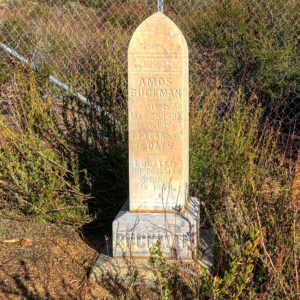
*Note: Findagrave.com states there is a flag that marks the location of Amos Buckman’s grave, however there is no flag marking it as of March 10, 2020.

